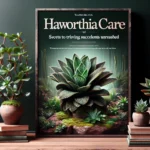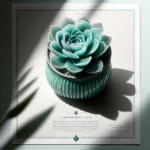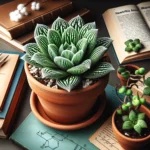Unlocking the Beauty of Haworthia Pumila
Dive into the world of Haworthia pumila, a species that elevates the standard of succulent beauty. This petite powerhouse of a plant isn’t just another pretty face in the crowded succulent society; it stands out with its distinctive characteristics and visual charm.
Imagine a succulent that perfectly embodies the phrase “dynamite comes in small packages.” That’s Haworthia pumila for you. Its thick, fleshy leaves are adorned with white tubercles, giving it a unique texture that’s both a visual and tactile experience. Unlike your typical green succulent, the Haworthia pumila displays a mesmerizing pattern that invites you to take a closer look and appreciate the intricacy of nature’s designs.
These charmers are not only a feast for the eyes but are also forgiving to those who haven’t been bestowed with a green thumb. They are the perfect companions for succulent enthusiasts looking to level up their collection with ease. Haworthia pumila asks so little of you – a sunny spot, infrequent waterings, and just a bit of attention – yet it gives so much in return, enhancing your space with its miniature grandeur.
But don’t let their diminutive size fool you; Haworthia pumila is as robust as they come. Picture this little warrior tackling the robust South African climate with a resilient spirit that’s as inspiring as it is impressive. Whether it’s basking in the partial sunlight or nestled in the shade, this succulent adapts and thrives.
Characteristics That Captivate
When speaking of Haworthia pumila, one cannot help but highlight its fascinating resilience. If you’ve ever battled with the disappointment of a withered plant, you’ll appreciate the tenacity of this succulent.Discover tips on fostering the hardiness of your own succulent collection.
There’s something truly magical about a plant that calls to mind the rolling landscapes of its African heritage, reminding us of its journey from the wild to our windowsills. Each Haworthia pumila carries with it stories of survival and adaptation, something houseplant lovers and nature aficionados alike can relate to and admire.
Take a moment to enjoy this visual treat and learn more about the Haworthia pumila with the included video below, showcasing not just its beauty but also its journey from a revered wild gem to a cherished household jewel.
Ideal Growing Conditions for Thriving Haworthia Pumila
Imagine conjuring the spirit of the African wilds within your living room or adding an exotic touch to your office desk. That’s the charm of Haworthia pumila, a succulent that captivates with its intricate foliage and resilient nature. Crafting the perfect environment for these botanical treasures is simple when you know their sweet spots. Let’s dig into the earthy details of cultivating a flourishing Haworthia pumila.
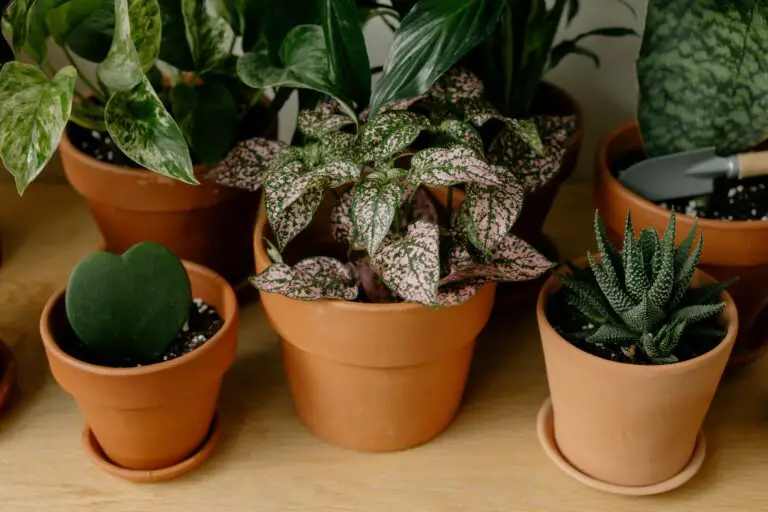
Soil: The Foundation of Life
Begin with the basics: soil. Haworthia pumila thrives in a well-draining mixture, reminiscent of its native South African earth. A blend of potting soil, coarse sand, and perlite conjures the perfect growing medium, allowing for quick drainage while retaining just the right amount of moisture. Picture the rugged landscapes of the succulent’s homeland – your pumila seeks to echo its roots in its pot.
Catching the Rays: Light Requirements
Let there be light! But not too much. This jewel prefers bright, indirect light, much like the dappled sunlight that filters through a high canopy. Place it near a north-facing window, or where the sun’s rays are gentle, to mimic the natural illumination of its habitat. Direct scorching sunlight might tarnish its vibrant splendor, leaving you with a wilted treasure rather than a verdant gem.
Temperature: Warmth Without the Scorch
Comfortably warm temperatures suit Haworthia pumila best – think of those temperate, semi-arid zones. They revel in a climate ranging from 65°F to 80°F (18°C to 27°C), which, luckily, aligns with the average room temperature in many homes. A cozy spot away from cold drafts or searing heat sources will assure your pumila feels right at home.
In the care of these succulent darlings, it’s about recreating a slice of their exotic essence. Harness your green thumb with insights from succulent care guides, and you’ll find the Haworthia pumila weaving its enchanting story in your abode. Each leaf unfurling like a page, each new rosette a chapter in its thriving saga.
“`html
Ideal Growing Conditions for Thriving Haworthia Pumila
Ever wonder how to transform your space with a touch of nature’s magic? Look no further than Haworthia pumila, a dazzling succulent that brings the essence of the African wild into your home. Perfect for green-thumbed enthusiasts and beginners alike, this hardy plant offers a low-maintenance yet elegant addition to any interior.
Let’s delve into what it takes to give your Haworthia pumila an environment where it can truly shine.



Soil: The Bedrock of Vitality
To kick things off, soil matters. Mixing a concoction that mimics the porous, rocky substrates of its natural habitat is key. Opt for a soil blend specifically designed for succulents or mimic this by combining regular potting soil with sand and perlite. Your Haworthia pumila’s roots need to breathe and excess water must escape swiftly to prevent root rot, the arch-nemesis of succulents.
Light: The Beacon of Growth
Now, let’s illuminate your understanding of light requirements. These plants crave bright, indirect sunlight. Simulate the shaded underbrush of South Africa by placing your pumila near a north or east-facing window. This will bathe it in the morning light, without the harsh midday exposure that could sunburn its delicate leaves.
Temperature: The Invisible Embrace
Warmth encourages the hearty spirit of the Haworthia pumila, but excessive heat is a no-go. Keep the temperature steady between 65°F and 80°F (18°C to 27°C) and avoid sudden temperature drops or frosty drafts, which could send your succulent into shock. Think of it as creating a cozy, climate-controlled nook that invites this plant to thrive.
Cultivating Haworthia pumila is a joyous endeavor that immerses you in the rhythms of nature. Support your splendid specimen through succulent care tips to watch it grow into a luscious, living work of art. Each sprout and leaf unfolds a tale of resilience and beauty, echoing the landscapes from which it hails.
“`
Watering Wisdom: Keeping Your Haworthia Pumila Happy
When it comes to quenching the thirst of your Haworthia Pumila, the “less is more” approach is a mantra to live by. Just like the right amount of seasoning enhances a meal, the proper watering schedule can make a world of difference for these jewel-like succulents. Picture this: the sun is setting, you’ve had a long day, and it’s time to pamper your green companion with a drink—but how much is just right?
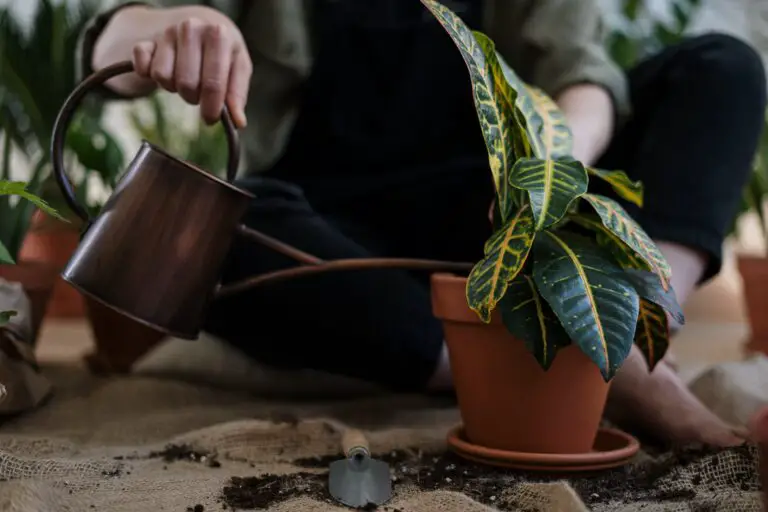

Imagine your haworthia as a desert native, lounging in arid environments, sipping seldom but deep on the rare rain. Mirroring this in your home means watering deeply but infrequently, allowing the soil to completely dry out before the next watering session. It’s a delicate dance to prevent common issues like root rot, which stems from overzealous watering habits.
During the active growing season in spring and summer, your Haworthia Pumila will be more thirsty, yet even then, soaking it every two to three weeks should suffice. Winter demands even less—like a bear in hibernation, your plant’s water needs drop, requiring moisture perhaps only once a month. If you’re unsure, a quick probe of the soil with a finger can be your guide; if it’s dry an inch below the surface, it’s time to water.
Let’s take a leaf out of The Ultimate Guide to Succulent Care, which illustrates that successful succulent parenting hinges on understanding the unique water requirements of these resilient plants. By modeling your care routine after their natural habitat, you’ll sidestep the pitfalls of overwatering and cultivate a haworthia that’s not only surviving but thriving.
When you do water, ensure it’s a thorough drenching, allowing excess water to escape through the drainage holes. This mimics a rare desert downpour, flushing out accumulated salts and ensuring your potted beauty’s roots drink their fill. And remember, it’s not just about the frequency and quantity, but also the quality of water—room temperature and free of harsh chemicals ensures your Haworthia Pumila will grow as lush and vibrant as a treasure in the botanical kingdom.
Fertilizing Tactics for a Flourishing Haworthia Pumila
Ready to transform your Haworthia pumila from just “surviving” to absolutely “thriving”? The secret sauce is in the fertilizing! Just as a barista crafts the perfect blend for a morning cup of joe, you need to mix the right nutrients for your plant buddy. It’s not about drowning your green friend in nutrients, but giving it that gentle nudge towards lushness.
Imagine a balanced diet, but for your plant. A squirt here and there of a balanced, water-soluble fertilizer during the growing season, roughly once a month, is like hitting the bullseye. Too much though, and you’re overshooting – the equivalent of a sugar rush followed by the inevitable crash. And in the dormant winter months, give it a break; let your Haworthia pumila rest and recuperate.
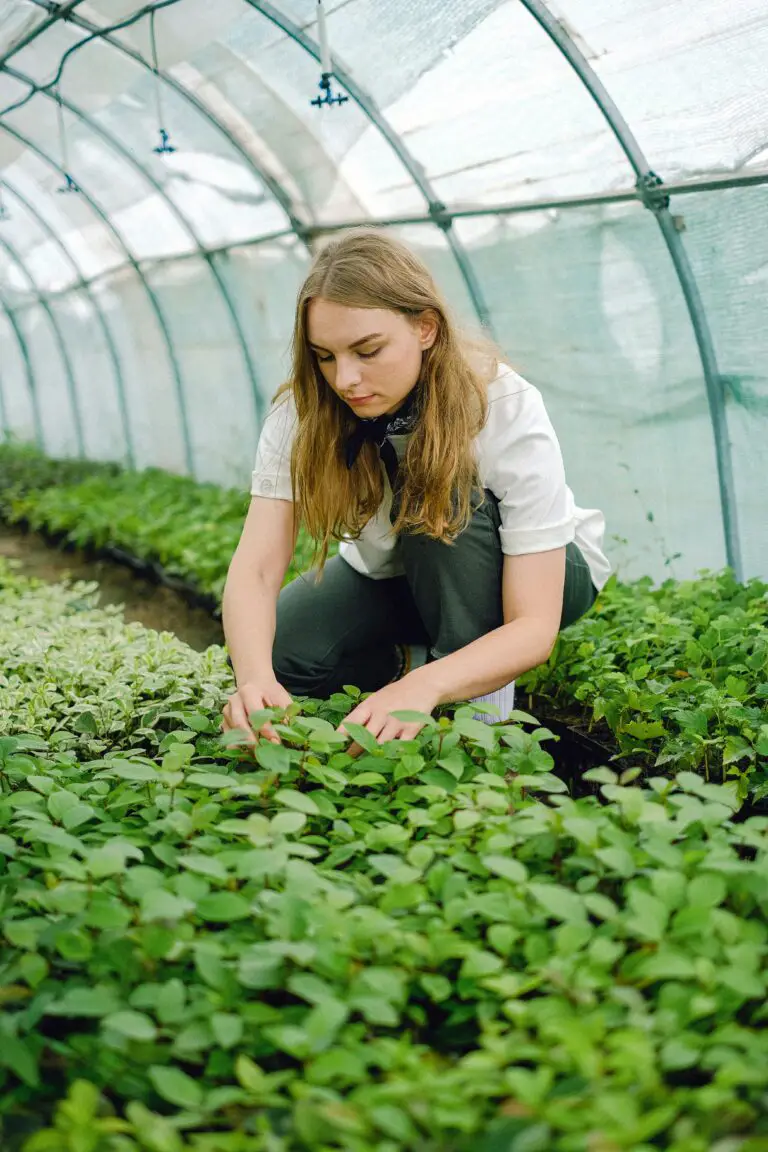

Here’s a real-life snippet: my neighbor once loved her Haworthia a little too much (yes, that’s possible) and went full throttle with fertilizer. The result? A plant that looked like it was on a perpetual caffeine high – not pretty. I steered her towards a more mellow approach, and voila! Her plant now boasts a vibrant, radiant complexion. Lesson learned: moderation is key.
Now if you wish to dive deeper into plant nourishment, checking out our comprehensive guide on succulent care is a fantastic starting point. You’ll discover that fertilizing is just one piece of the puzzle when it comes to the well-being of your succulents.
Remember, while Haworthia pumila isn’t too picky, cater to its needs with consideration. The right fertilizer, applied sensibly, will lead your plant down a path of glossy, robust leaves – a true testament to your nurturing prowess!
Pruning and Maintaining Your Haworthia Pumila
Imagine you’re a plant stylist, sculpting your very own living sculpture, and your current project is the resilient yet elegant Haworthia Pumila. Like a cherished bonsai or a topiary, your succulent too needs regular maintenance to boast its best form. Let’s delve into the nitty-gritty of pruning and keeping your Haworthia Pumila in show-worthy condition!
The first step is to ensure that you have the right tools for the job. You wouldn’t use a sledgehammer to tap in a tiny nail, right? Similarly, a pair of sharp, clean, and precise pruning shears or a scalpel is your best friend when it comes to delicately removing unwanted leaves from your Haworthia Pumila.
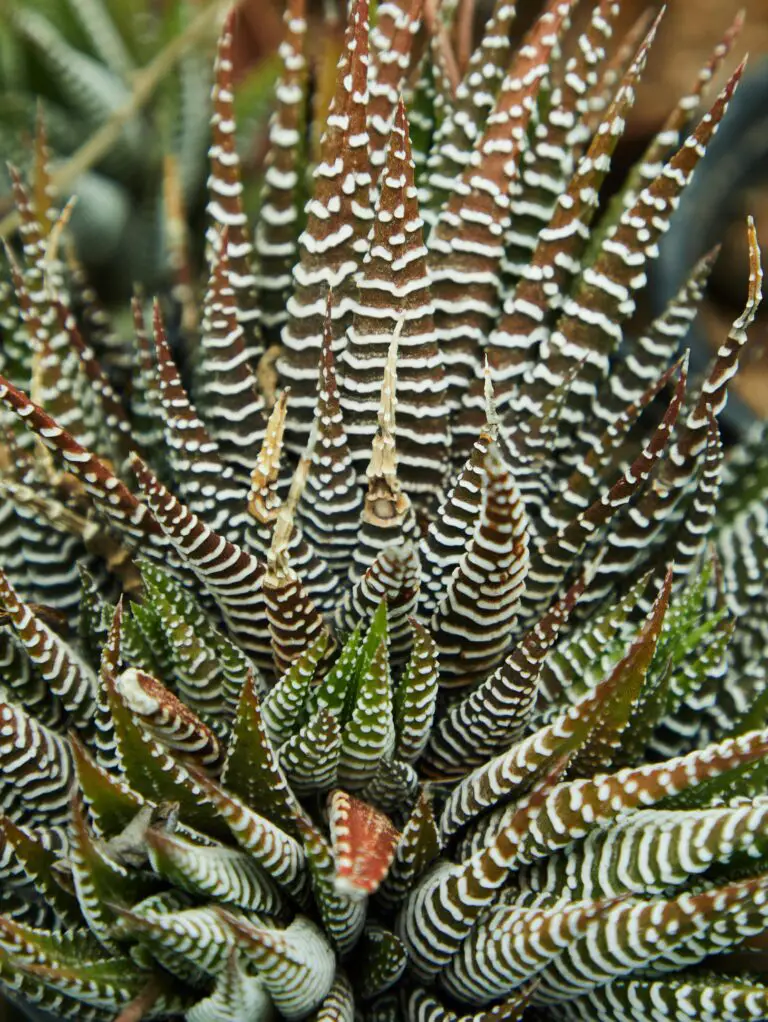

Now, picture your Haworthia Pumila as a bustling city. As in any thriving metropolis, there’s always the old infrastructure that needs to be replaced to make room for the new. In your succulent city, these are the dead or damaged leaves and offshoots that have served their purpose. Carefully cut these parts away near the base without damaging the healthy flesh. This not only tidies up your plant but encourages new growth, much like urban revitalization spurs a neighborhood’s renaissance.
Timing is Everything
Just as you wouldn’t give a child a haircut while they’re bouncing on a trampoline, timing your pruning session with your Haworthia Pumila’s growth phase is key. The best time to prune is during the growing season, usually spring or early summer, when your plant is ready to heal quickly and push out fresh, new growth.
Remember, it’s not just about removing the old; it’s about stimulating the new. After pruning, treat your Haworthia to a light feeding with a succulent fertilizer to encourage it to leaf out. Always water carefully, though. Treat your succulent like a finely crafted ale – neither should be watered down! Allow the soil to dry out completely between waterings, and when you do water, do so thoroughly, ensuring excess water drains away.
Of course, the pièce de résistance of any good maintenance session is the finishing touches. For your Haworthia Pumila, this could mean a top dressing of fine gravel or sand to reflect its natural, rustic habitat and enhance its visual appeal. Plus, this touch of grooming helps to keep the moisture balance just right, promoting healthy roots and deterring pests.
Multiplying Beauty: Propagating Your Haworthia Pumila
Are you looking to expand your succulent family? Good news! Your Haworthia pumila, also known as the “Tulista pumila”, is not only a beautiful addition to any plant collection but also a prolific propagator. Let’s dive into the simplicity and joy of growing your little green brood.
First off, the good ol’ offset method. Offsets, sometimes called “pups”, are your plant’s gift to you – little replicas that spring up from the base of the mother plant. Once they’re a decent size (think the size of a large coin), simply twist them off gently and plant them in a well-draining cactus mix. They’re the mini-me’s of your Haworthia pumila, and with a little water and love, they’ll flourish.
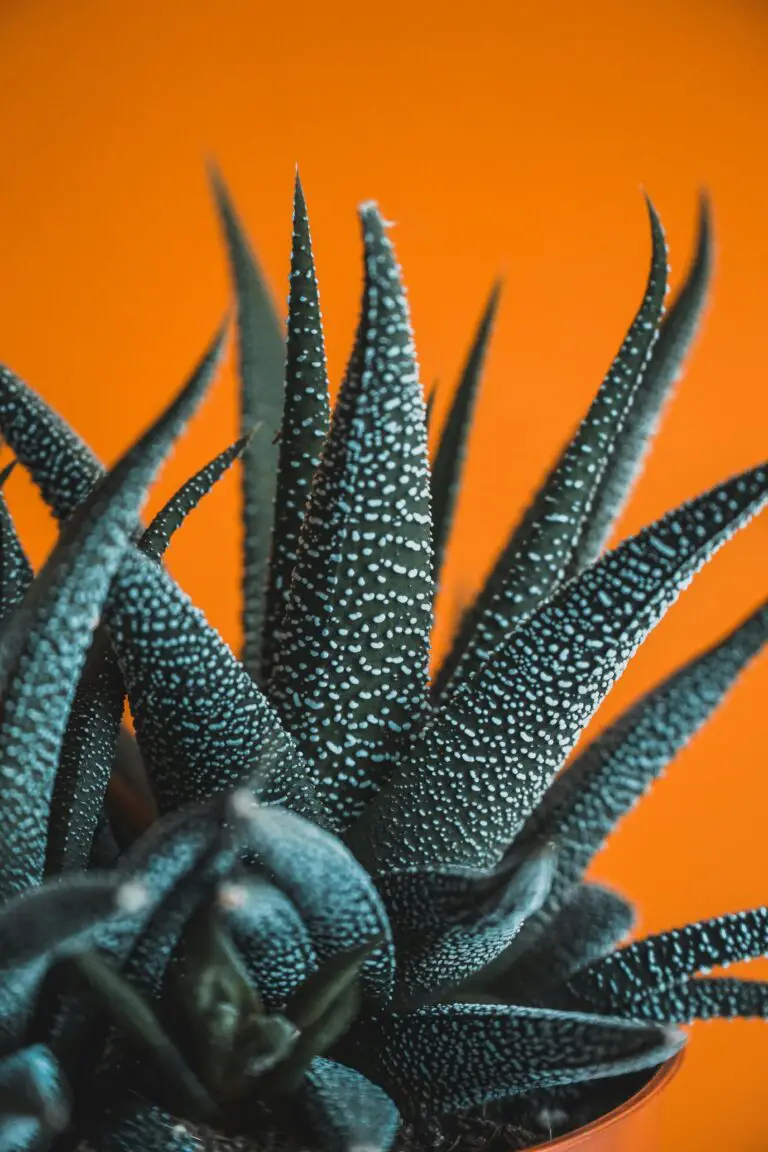

Too impatient for offsets? Let’s talk seeds. Propagating Haworthia pumila from seeds is like playing the long game of plant parenting – both challenging and rewarding. It requires patience as you wait for seeds to germinate and tiny seedlings to mature. Imagine nurturing these seeds into full, plump succulents; it’s a bit of a wait, but oh the satisfaction when your thumb turns the greenest of greens!
And don’t overlook leaf cuttings – the unsung heroes of propagation. Select a healthy, plump leaf from your Haworthia pumila, and with a clean cut, detach it from the mother plant. Lay the leaf on soil and give it time. As it calluses, roots will venture out, seeking life. With minimal fuss, you’ll soon see new growth, a testament to your propagation prowess.
Remember, propagating Haworthia pumila isn’t a race; it’s a leisurely stroll through the garden of growth. So, choose your method, be it offsets, seeds, or leaf cuttings, and bask in the multiplying beauty of your succulents. Each new plant is a story, a living narrative of your journey into the verdant world of plant propagation.
Common Challenges in Growing Haworthia Pumila
Gardening enthusiasts who have taken a shine to the charming Haworthia pumila, often referred to as the “Tulista pumila”, sometimes find that their botanical companion is up against a few hurdles. Despite their hardy nature, these succulent marvels can face trials from environmental stresses, pesky invaders, and mysterious maladies.
Combatting Pests
The first common challenge is defending your haworthia pumila against the onslaught of pests. Mealybugs, those villainous little white fluff usurpers, are notorious for invading the base of the leaves, siphoning off the plant’s vitality. Spider mites may also spin a fine web of trouble on the foliage under dry conditions. The key to victory lies in early detection and rapid response—a vigilant gardener’s eyes are the best defense! Employ insecticidal soaps or a dab of alcohol on a cotton swab to tactically diminish the pest population.
Thwarting Diseases
Next on the list of challenges are diseases, which can cast a shadow on the health of your haworthia pumila. Root rot—a stealthy adversary that creeps up when the soil’s moisture reaches a nefarious excess—is the prime suspect in many unhappy outcomes. The remedy? Ensuring your succulent’s abode has ample drainage, mixed with a disciplined watering regimen, will keep the dreaded rot at bay.
Environmental Stresses
Environmental stresses can also throw a spanner in the works. Haworthia pumila, whilst resilient, has distinct preferences—bright, indirect light and a temperature range it adheres to with surprising stoicism. Too much direct sun can scorch its leaves, leaving behind a battlefield of brown patches. Conversely, insufficient light can weaken your plant’s structural integrity, making it appear etiolated and stretched, as if reaching for an unseen sun. Maintaining the golden mean of lighting conditions will keep your haworthia in high spirits.
It’s not just the celestial light that matters, though—the thermal embrace of its surroundings is equally critical. Too cold, and you’ll find your warrior succulent’s metabolism slows, its growth stymied. Too warm, and you risk dehydration beyond the norm for these drought-resistant natives. Striking the right temperature balance is like choosing the perfect armor for your plant—it’s essential for survival in a sometimes hostile world.
Understanding the common challenges in growing Haworthia pumila is akin to crafting a tale of triumph over adversity. With the right knowledge and tools, every gardener can become a hero in their own right, ensuring their haworthia pumila thrives and continues to add that touch of botanical elegance to their collection.
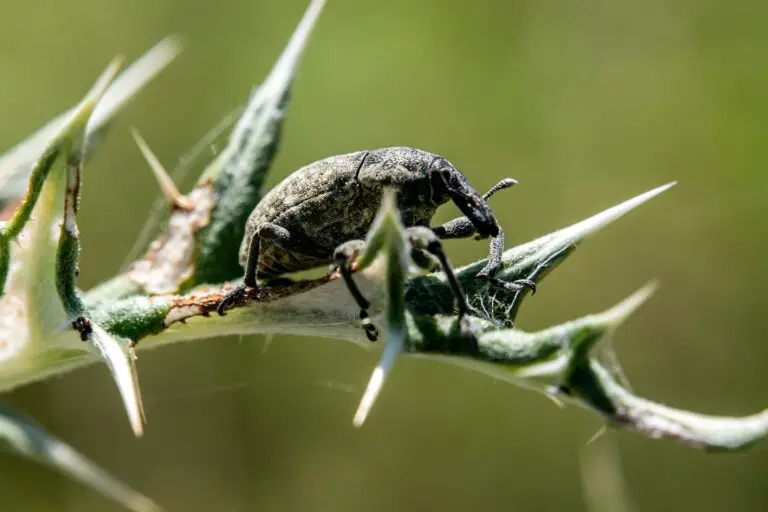

Common Challenges in Growing Haworthia Pumila
Any green thumb may tell you that growing succulents is a breeze, but even the hardy haworthia pumila can have its fair share of challenges. Those cultivating this resilient plant may encounter a trifecta of trouble: pests, diseases, and environmental stresses, which can turn your succulent sanctuary into a real head-scratcher.
Pesky Pests
First, let’s address the creepy-crawly conundrum. Aphids, mealybugs, and scale insects view your haworthia pumila as a delectable diner, ready to feast on its sap and weaken the plant. Vigilance and swift action are vital. Picture this: you notice a tiny white cluster forming at the base of the leaves. It’s a mealybug invasion! Time to whip out the neem oil or insecticidal soap like a plant-saving superhero and show those bugs the door.
Dodging Diseases
Moving on to diseases, the infamous root rot often looms when excess water lingers. Let’s set the scene: you lovingly water your haworthia pumila, but alas, the pot’s drainage resembles a clogged street after a storm. It’s only a matter of time before the roots protest and rot sets in. The solution is to emulate the well-draining soils of haworthia pumila’s natural habitat—think gritty, sandy mixtures that let water flow through like a fresh breeze.
Evading Environmental Stresses
Now, let’s talk environmental stress. Too much direct sunlight can cause a haworthia pumila sunburn that no aloe vera can soothe—imagine leaf tips as brown as roasted marshmallows! On the flip side, too little light and your plant could stretch out like a cat in the sun, becoming leggy in a not-so-charming way. Balance is key: a dappled light setup that mimics a shaded rock crevice in its African home will keep your plant picture-perfect.
Remember, growing haworthia pumila is not just about providing care but also about embracing the role of a sagacious steward. Give your plant a fighting chance against these challenges, and it will repay you by thriving as a verdant gem in your collection.
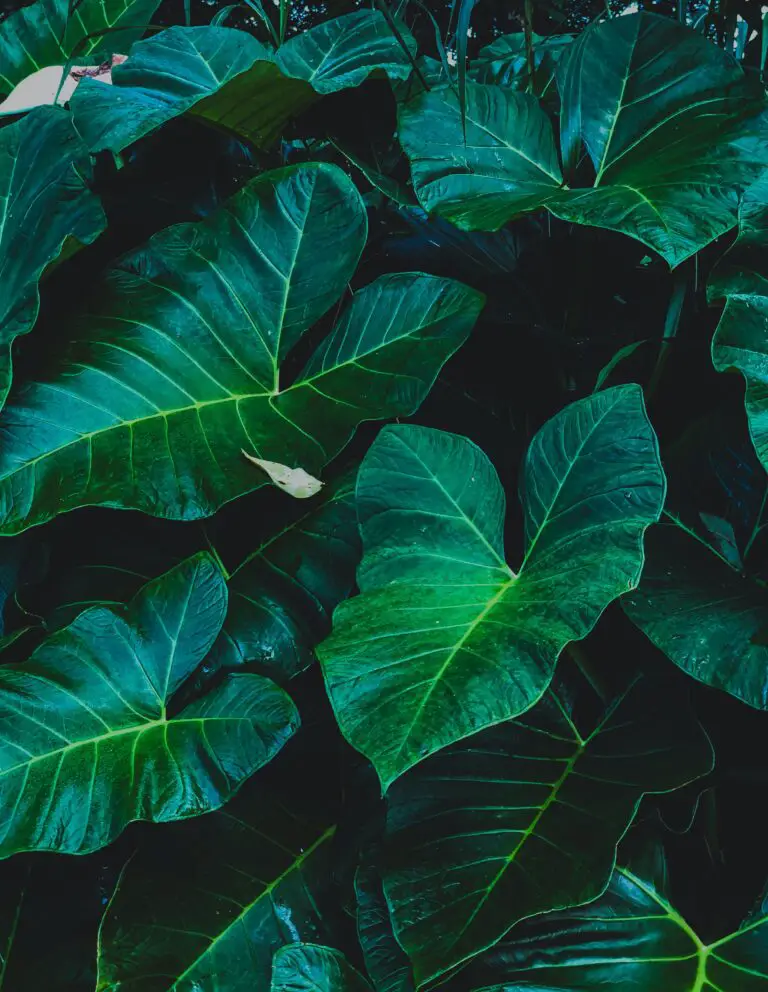

Curating a Collection: Companion Plants for Haworthia Pumila
Embarking on the delightful journey of planting succulents? Then you’re in for a treat, as we explore the perfect companions for the resplendent Haworthia pumila, a genuine gem in the succulent world. Imagine a tapestry of textures and colors, blending together to form a living mosaic in your garden or terrarium.
First and foremost, let’s talk about the ever-charming Aloe. The rosettes of ‘Blue Elf’ or the spotted leaves of ‘Pink Blush’ Aloe mirror the hardy nature of Haworthia pumila. Together, they not only share similar care requirements but the contrast in leaf structure and color can make a stunning visual impact. It’s like pairing wine with a gourmet meal, each enhancing the other’s beauty and personality.


Consider the sleek lines of Echeveria, whose broad, fleshy leaves provide an aesthetic counterpoint that’s both bold and soothing. The ‘Black Prince’ or ‘Lola’ varieties, with their dramatic hues, create a moody ambiance that allows the brighter greens of Haworthia pumila to pop, much like abstract art pieces scattered across your personal canvas.
For a burst of whimsy, sprinkle in some Sedum. The playful Sedum ‘Dragon’s Blood’ with its red-tipped leaves or the dainty Sedum ‘Angelina’ with its needle-like foliage bring a light-hearted touch. They’re like the spark of laughter in a conversation, unexpectedly delightful and thoroughly invigorating.
Don’t shy away from adding a tuft of Crassula. Go for the ‘Baby Necklace’ or ‘Hobbit’ varieties, whose intricate details command attention—the equivalent of a fascinating story told by a beloved friend.
Lastly, a collection would be incomplete without the soft whispers of Senecio, such as the ‘Blue Chalksticks’ or the ‘String of Pearls’, trailing and weaving through the arrangement. It’s like the subtle background music that completes the atmosphere, unifying the ensemble into a harmonious and textured collection.
Each plant alongside Haworthia pumila plays its part in this botanical symphony, creating an ensemble that resonates with life and diversity. It’s a connection of forms, a dance of colors, a reminder that sometimes, the best collections are those crafted with intention and companionship in mind.
Decorating with Haworthia Pumila: Aesthetic Applications
Envision a verdant touch of wilderness within the curated confines of your home or office. Embedding Haworthia pumila into your living spaces isn’t just about adding a splash of green; it’s a strategic choice for the aesthetically discerning. Let’s explore the ways this succulent can sync harmoniously with your decor, highlighting its plump, textured leaves and serene presence.
Imagine this: a minimalist living room where every object breathes intentionality. Amidst the clean lines and monochromatic palette, there sits a Haworthia pumila, its luscious, fleshy leaves offering a contrast in both texture and vitality. Housed in a simple square pot, it stands as a living sculpture, a companion to the quietude and orderliness. As a low-maintenance gem, it fortifies the space with a whisper of nature’s unruffled beauty.
Now, picture your dynamic office environment. Papers may shuffle, and keyboards click away, but your Haworthia pumila, gently perched on a corner of your desk, remains a constant – a silent emblem of the outdoors. As stress ebbs and flows, a glance at its resilient form reminds you of life’s simpler elements. Its mere presence wages a gentle war against the sterility of technology and artificial light, bringing balance and composure to your workplace.
Pairing with Furnishings and Accents
Consider the synergy between Haworthia pumila and your decor substance. Aged wood, whether it’s a coffee table or bookshelf, resonates with the plant’s hearty allure. Metal accents or contemporary ceramics complement the succulent’s inherent geometric patterns, creating a dialogue between the organic and the crafted. Each juxtaposition not only emphasizes the plant’s unique form but also anchors the design elements of your surroundings.
Don’t overlook the ceremonial aspect; a carefully placed Haworthia pumila in a decorative terrarium on the dining table can become the centerpiece of evening conversations. Encircled by soft candlelight or dim ambient lighting, the pointed foliage catches shadows and luminescence, a living testament to the intersection of design and nature.
Finally, for those craving a touch of opulence, flank your luxurious bathtub with a pair of these succulents. As you sink into the warm waters, the serene, spiky silhouettes against a backdrop of artisanal tilework or frosted glass can transport you to a place of peace and indulgence.
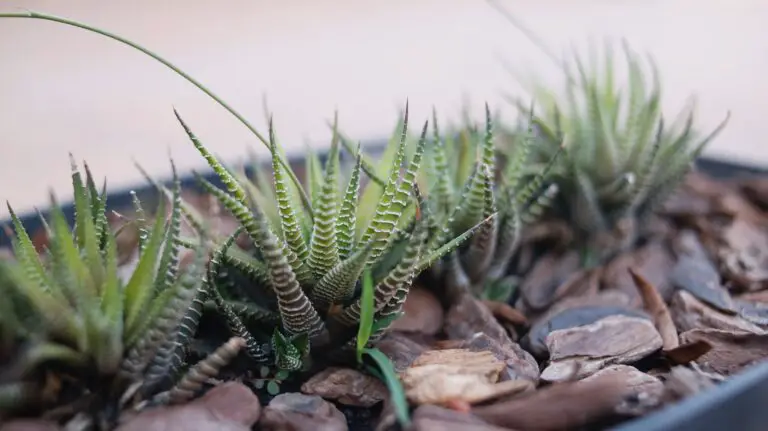

Allow Haworthia pumila to be more than a plant; let it become an essential thread in the fabric of your decor. Its adaptability and low demand for attention make it the perfect accent piece, capable of drawing the eye without demanding the spotlight, enabling it to fit seamlessly into the narrative of any design scheme.
Frequently Asked Questions
Whether you’re a seasoned gardener or a curious newcomer to the world of succulents, Haworthia pumila is a species that can spark a multitude of questions. We’ve compiled a handy FAQ to help demystify the care and characteristics of these terrestrial treasures.
How often should I water my Haworthia pumila?
Lend an ear to your plant’s needs rather than sticking to a rigid schedule. Picture this: It’s a hot summer week, and your Haworthia pumila’s soil is as dry as an arid desert. That’s its way of saying, “A drink, please!” During the cooler months, though, your plant is more like a camel, storing water and needing less frequent sips. Poke the soil; if it’s dry a couple of inches down, it’s time to water.
Does Haworthia pumila need direct sunlight?
Ever seen a succulent sunbathing? Well, your Haworthia pumila loves the light but prefers not to bask in the intense midday rays. Find a spot where morning or late afternoon sun can gently caress its leaves without causing the botanical equivalent of a sunburn. A window with filtered light is the ideal tanning bed for this jewel.
What kind of potting mix is best for Haworthia pumila?
Imagine dressing up for a hike; you’d want clothes that wick moisture away, right? That’s what your Haworthia pumila needs in a potting mix—a blend that’s light, airy, and drains faster than a sink in a spy movie. A mix designed for cacti and succulents or a homemade concoction with perlite or coarse sand will keep your plant’s roots as happy as a clam.
How do I know if my Haworthia pumila is healthy?
Do the “Look, Touch, and Ponder” check. Look for perky, firm leaves—a slumping plant is a cry for help. Touch the leaves; they should be as plump and firm as a well-stuffed pillow. Ponder the color; you want a rich, vibrant green, not the pale, washed-out hue of a plant that’s seen better days. Monitor these cues regularly, and you’ll be a pro at decoding your Haworthia’s health language.
My Haworthia pumila looks stretched out. What’s happening?
Turn detective when your plant starts to resemble a high-rise building. This stretching, called etiolation, is your succulent’s attempt to reach for more light. It’s literally growing out of its comfort zone! If you notice this, play musical chairs with your plants—move your Haworthia pumila to a brighter location but do it gradually to avoid shocking its system.
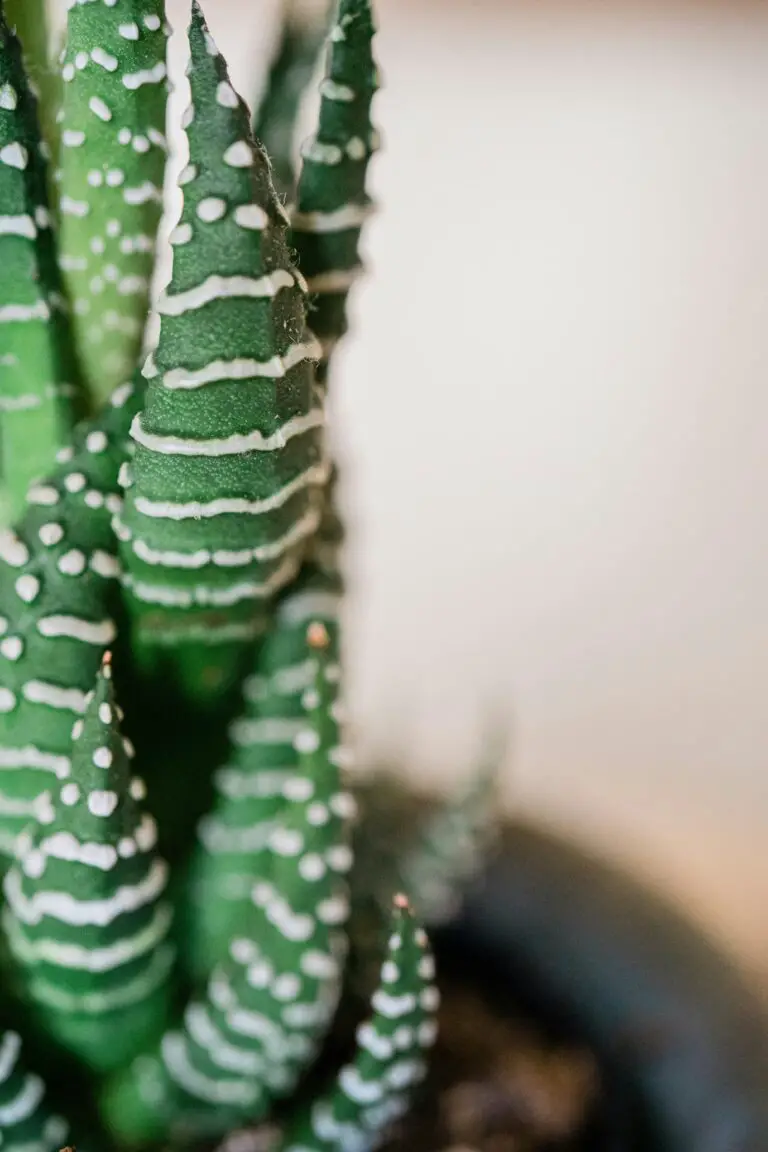

Can Haworthia pumila survive cold temperatures?
Imagine your Haworthia pumila snuggled up in a cozy blanket—that’s essentially what it needs during cold snaps. While it can tolerate a light frost, think of it like a tropical vacation lover; it prefers warmer climates. Shielding it from temperatures below freezing is crucial. A move indoors during the chillier months will keep your succulent’s spirits—and temperatures—up.
Is Haworthia pumila pet-friendly?
You don’t have to choose between your furry friends and your botanical buddies! Haworthia pumila is non-toxic, so the occasional nibble from a curious cat or dog won’t turn into a trip to the vet. Still, while it plays nice with pets, your little green companion would rather not be a chew toy, so keep an eye on those plant-pet interactions.

